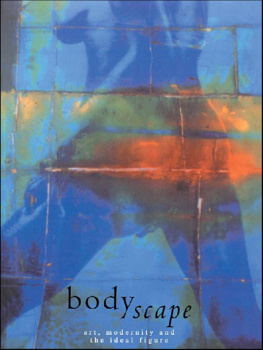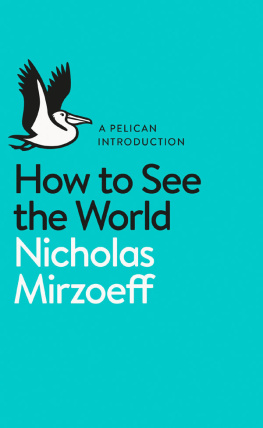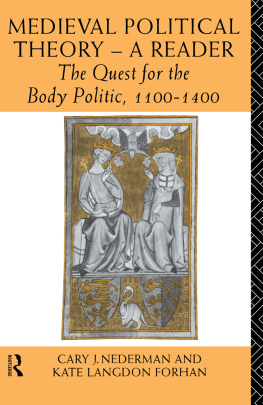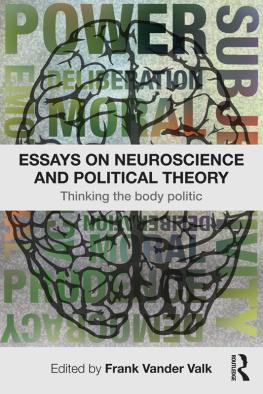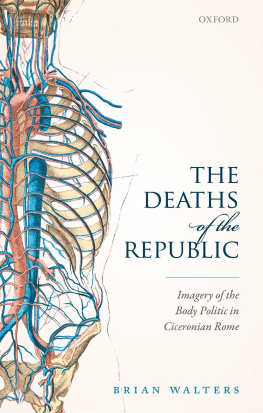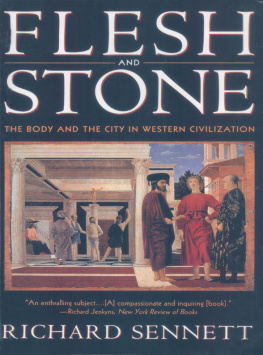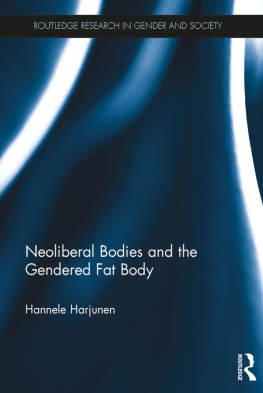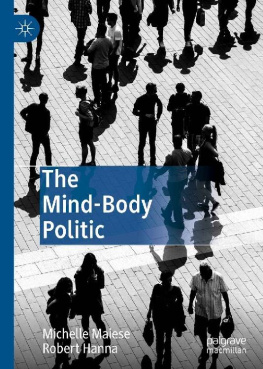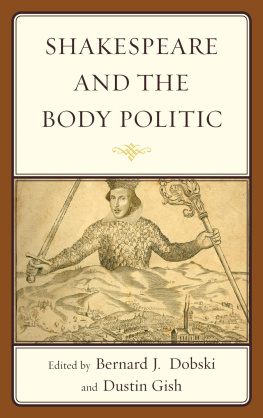BODYSCAPE
Western art has long sought to find a perfect method of representing the body. With the loss of faith in the modernist profect, the perfect, straight, white body of modernism is now seen as fiction. But what sort of body will take its place? In Bodyscape, Nicholas Mirzoeff explores body images in visual culture, from revolutionary France to contemporary New York.
Mirzoeffs illuminating study engages with artists use of different kinds of body images in painting, sculpture, photography and film. He shows the centrality of the body in the work of artists from da Vinci to Manet, from Paul Strand to Kiki Smith. Mirzoeff traces the many ways in which concerns about race, gender, sexuality, nation and technology are reflected in representations of the body and the body politic, from the paintings of David to the Vietnam Veterans memorial. He also considers figures of the Madonna, from Ingres to Picasso to Madonna the performer, and inscriptions of race on to the visual body, from documentary photography of the colonial Belgian Congo to the art of Jean Michel Basquiat.
Nicholas Mirzoeff is Assistant Professor of Art History at the University of Wisconsin-Madison. He is the author of Silent Poetry: Deafness, Sign and VisualCulture in Modern France.
VISUAL CULTURES
Series Editor: Anthea Callen,
University of Warwick
BODYSCAPE
Art, modernity and the ideal figure
Nicholas Mirzoeff
First published 1995
by Routledge
11 New Fetter Lane, London EC4P 4EE
Simultaneously published in the USA and Canada
by Routledge
29 West 35th Street, New York, NY 10001
Transferred to Digital Printing 2002
Routledge is an imprint of the Taylor & Francis Group
This edition published in the Taylor & Francis e-Library, 2005.
To purchase your own copy of this or any of Taylor & Francis or Routledges collection of thousands of eBooks please go to www.eBookstore.tandf.co.uk.
1995 Nicholas Mirzoeff
All rights reserved. No part of this book may be reprinted or reproduced or utilized in any form or by any electronic, mechanical, or other means, now known or hereafter invented, including photocopying and recording, or in any information storage or retrieval system, without permission in writing from the publishers.
British Library Cataloguing in Publication Data
Mirzoeff, Nicholas
Bodyscape.(Visual Cultures Series)
I. Title II. Series
704.942
Library of Congress Cataloguing in Publication Data
A catalogue record for this book has been requested
ISBN 0-203-39340-6 Master e-book ISBN
ISBN 0-203-39624-3 (Adobe eReader Format)
ISBN 0-415-09800-9 (hbk)
ISBN 0-415-09801-7 (pbk)
For Dan and Sacha
FIGURES
ACKNOWLEDGEMENTS
This book was written in dialogue with my students over the past seven years, so Id like to thank all my classes at the University of Warwick, the University of California, Irvine and the University of Wisconsin, Madison. Special thanks to Anthea Callen who first suggested that I teach a course on the body and later commissioned this book for her series. Both actions are typical of her intellectual and personal generosity, rare qualities indeed in the modern academy. Rebecca Barden was a model editor, ably assisted by Tamsin Meddings and Sophie Powell. Thanks to Moira Taylor and Bill MacKeith for handling the production process with efficiency and skill. Anita Duquette of the Whitney Museum of American Art was generous in assisting me to locate photographs. It is a clich of acknowledgements to end by saying that without ones spouse the book never would have been written. In this case, it happens to be true. Kathleen Wilson provided a model of engaged scholarship in her own right, continually urged me to continue with this project when I lost enthusiasm for it and, most importantly, gives me a reason to do all this and more.
INTRODUCTION
Your body is not itself. Nor, I should add, is mine. It is under siege from the pharmaceutical, aerobic, dietetic, liposuctive, calorie-controlled, cybernetic world of postmodernism. The body has become a central concern both in academia and the wider culture, providing one of the few points of direct contact between these often divorced spheres. After the scandal over Robert Mapplethorpes 1988 exhibition, the rise of new techniques of medical imaging of the body, and the dissolution of many of the norms of sexualized identity, the body question continues to gain urgency. Indeed, at all times of social uncertainty in the West, the representation of the body has been a key concern. The current moment is an amplification of the experience Walter Benjamin perceived in the generation who lived through the First World War: A generation that had gone to school on a horsedrawn street car now stood under the open sky in a countryside in which nothing remained unchanged but the clouds, and beneath those clouds, in a field of force of destructive torrents and explosions, was the tiny, fragile, human body (Benjamin 1968:84). Today the sky itself has changed, as a result of pollution, global warming and deforestation. Rapid and dramatic shifts in technology occur every year, not once a generation. In a world where change has become the norm, it seems inevitable that the body must change as well. Yet there is a sense, articulated by Benjamin, that if the body changes, then everything has been transformed. The body is at once the final point of resistance to the global imperatives of postmodernism and the first to be affected by them.
In recent years, there has been a rush to claim that such transformations have already occurred. Critical theorists have proclaimed the appearance of the body without organs, while technology enthusiasts have hailed computer environments as a new form of communication beyond the limits of the individual body. But it may be premature to announce such an epochal shift. The early Christian prophet Origen convinced his followers in the second century AD that the human body was about to be destroyed by God, and ever since messianics have waited on hilltops for such dawns, only to be disappointed time and again. It is thus more than coincidence that announcements of the radical transformation of the body as we know it have the flavour of Christian eschatology. In the early excitement over postmodernism, it seemed that some such millennial moment was at hand. Now the postmodern seems rather less dazzling, and rather more problematic. As the divisions between the developed and underdeveloped world sharpen, and as racism and nationalism grow daily, the philosopher Jean-Franois Lyotards gnomic comment that there is a certain sorrow in the zeitgeist once again appears closer to the spirit of the postmodern. In this sense, the postmodern is not so much beyond the modern as a crisis of the modern. The goals and methods of the modern period seem open to question as never before, causing some to seem transcended, others newly contemporary, and others simply beside the point. These tensions are exacerbated by the divide between the relatively few Western nations which might be considered postmodern and the much larger group of nations for which modernism and modernizing are still key issues. The purpose of this book is to pursue a series of historical investigations into the visual representation of the body to see how much it has really changed.

